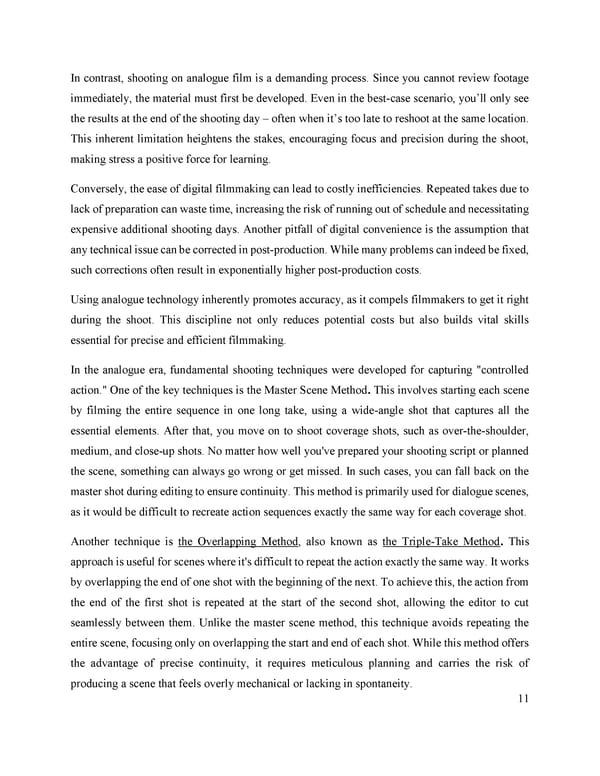In contrast, shooting on analogue film is a demanding process. Since you cannot review footage immediately, the material must first be developed. Even in the best-case scenario, you’ll only see the results at the end of the shooting day – often when it’s too late to reshoot at the same location. This inherent limitation heightens the stakes, encouraging focus and precision during the shoot, making stress a positive force for learning. Conversely, the ease of digital filmmaking can lead to costly inefficiencies. Repeated takes due to lack of preparation can waste time, increasing the risk of running out of schedule and necessitating expensive additional shooting days. Another pitfall of digital convenience is the assumption that any technical issue can be corrected in post-production. While many problems can indeed be fixed, such corrections often result in exponentially higher post-production costs. Using analogue technology inherently promotes accuracy, as it compels filmmakers to get it right during the shoot. This discipline not only reduces potential costs but also builds vital skills essential for precise and efficient filmmaking. In the analogue era, fundamental shooting techniques were developed for capturing "controlled action." One of the key techniques is the Master Scene Method. This involves starting each scene by filming the entire sequence in one long take, using a wide-angle shot that captures all the essential elements. After that, you move on to shoot coverage shots, such as over-the-shoulder, medium, and close-up shots. No matter how well you've prepared your shooting script or planned the scene, something can always go wrong or get missed. In such cases, you can fall back on the master shot during editing to ensure continuity. This method is primarily used for dialogue scenes, as it would be difficult to recreate action sequences exactly the same way for each coverage shot. Another technique is the Overlapping Method, also known as the Triple-Take Method. This approach is useful for scenes where it's difficult to repeat the action exactly the same way. It works by overlapping the end of one shot with the beginning of the next. To achieve this, the action from the end of the first shot is repeated at the start of the second shot, allowing the editor to cut seamlessly between them. Unlike the master scene method, this technique avoids repeating the entire scene, focusing only on overlapping the start and end of each shot. While this method offers the advantage of precise continuity, it requires meticulous planning and carries the risk of producing a scene that feels overly mechanical or lacking in spontaneity. 11
 Lost Analogue: Exploring Film, Music, and Interdisciplinary Methods in Education Page 11 Page 13
Lost Analogue: Exploring Film, Music, and Interdisciplinary Methods in Education Page 11 Page 13